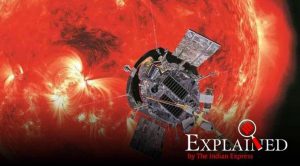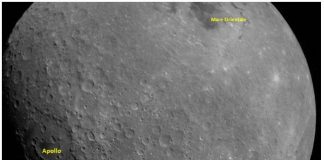FEBRUARY 18, 2020

Earlier this month, 47 new papers were published in a special supplement of The Astrophysical Journal, analysing data from the first three flybys of the Parker Solar Probe, NASA’s historic mission to the Sun. The probe, launched on August 12, 2018, completed its fourth close approach — called perihelion — on January 29, whizzing past at about 3.93 lakh km/h, at a distance of only 18.6 million km from the Sun’s surface.
So why is all of this exciting for India?
Alongside another mission to the Moon, being planned for next year, and the first human space flight scheduled for 2022, the Indian Space Research Organisation (ISRO) is also preparing to send its first scientific expedition to study the Sun. Named Aditya-L1, the mission, expected to be launched early next year, will observe the Sun from a close distance, and try to obtain information about its atmosphere and magnetic field.
ISRO categorises Aditya L1 as a 400 kg-class satellite, that will be launched using the Polar Satellite Launch Vehicle (PSLV) in XL configuration. The space-based observatory will have seven payloads (instruments) on board to study the Sun’s corona, solar emissions, solar winds and flares, and Coronal Mass Ejections (CMEs), and will carry out round-the-clock imaging of the Sun.
The mission will be undertaken in collaboration between various labs of ISRO, along with institutions like the Indian Institute of Astrophysics (IIA), Bengaluru, Inter University Centre for Astronomy and Astrophysics (IUCAA), Pune, and Indian Institute of Science, Education and Research (IISER), Kolkata. Aditya L1 will be ISRO’s second space-based astronomy mission after AstroSat, which was launched in September 2015.
What makes a solar mission challenging is the distance of the Sun from Earth (about 149 million km on average, compared to the only 3.84 lakh km to the Moon) and, more importantly, the super hot temperatures and radiations in the solar atmosphere.
All participating institutions are currently in the final stages of developing their respective payloads. Some payloads have been built, and are in the testing phase with each component being checked and calibrated. Some payloads are at the stage of integration of individual components.
But why is studying the Sun important?
Every planet, including Earth and the exoplanets beyond the Solar System, evolves — and this evolution is governed by its parent star. The solar weather and environment, which is determined by the processes taking place inside and around the sun, affects the weather of the entire system. Variations in this weather can change the orbits of satellites or shorten their lives, interfere with or damage onboard electronics, and cause power blackouts and other disturbances on Earth. Knowledge of solar events is key to understanding space weather.
To learn about and track Earth-directed storms, and to predict their impact, continuous solar observations are needed. Every storm that emerges from the Sun and heads towards Earth passes through L1, and a satellite placed in the halo orbit around L1 of the Sun-Earth system has the major advantage of continuously viewing the Sun without any occultation/eclipses, ISRO says on its website.
L1 refers to Lagrangian/Lagrange Point 1, one of five points in the orbital plane of the Earth-Sun system. Lagrange Points, named after Italian-French mathematician Josephy-Louis Lagrange, are positions in space where the gravitational forces of a two-body system (like the Sun and the Earth) produce enhanced regions of attraction and repulsion. These can be used by spacecraft to reduce fuel consumption needed to remain in position. The L1 point is home to the Solar and Heliospheric Observatory Satellite (SOHO), an international collaboration project of NASA and the European Space Agency (ESA).
The L1 point is about 1.5 million km from Earth, or about one-hundredth of the way to the Sun. Aditya L1 will perform continuous observations looking directly at the Sun. NASA’s Parker Solar Probe has already gone far closer — but it will be looking away from the Sun. The earlier Helios 2 solar probe, a joint venture between NASA and space agency of erstwhile West Germany, went within 43 million km of the Sun’s surface in 1976.
What kind of heat will Aditya L1 face?
The Parker Solar Probe’s January 29 flyby was the closest the spacecraft has gone to the Sun in its planned seven-year journey so far. Computer modelling estimates show that the temperature on the Sun-facing side of the probe’s heat shield, the Thermal Protection System, reached 612 degrees Celsius, even as the spacecraft and instruments behind the shield remained at about 30°C, NASA said. During the spacecraft’s three closest perihelia in 2024-25, the TPS will see temperatures around 1370°C.
Aditya L1 will stay much farther away, and the heat is not expected to be a major concern for the instruments on board. But there are other challenges.
Many of the instruments and their components for this mission are being manufactured for the first time in the country, presenting as much of a challenge as an opportunity for India’s scientific, engineering, and space communities. One such component is the highly polished mirrors which would be mounted on the space-based telescope.
Due to the risks involved, payloads in earlier ISRO missions have largely remained stationary in space; however, Aditya L1 will have some moving components, scientists said. For example, the spacecraft’s design allows for multiple operations of the front window of the telescope — which means the window can be opened or shut as required.
Courtesy/Source: Indian Express










































































































